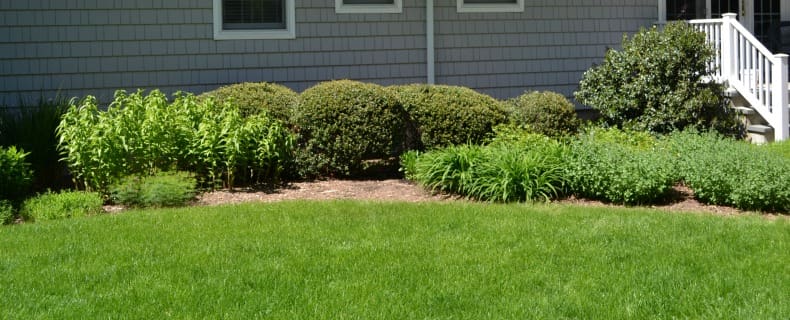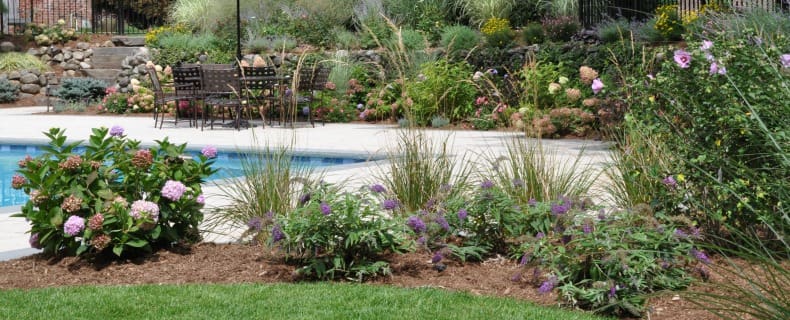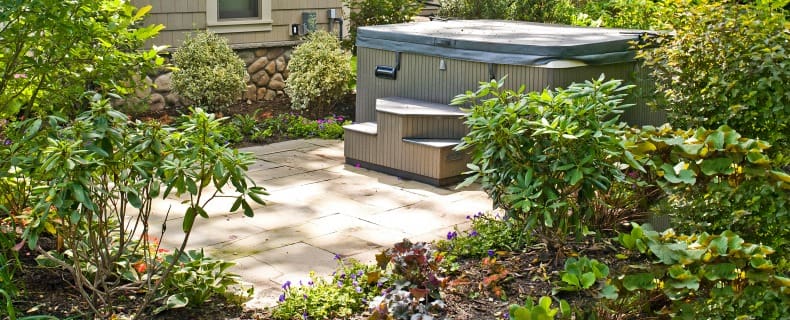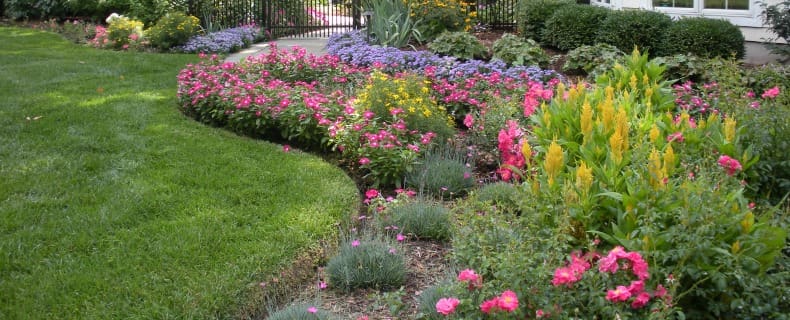Maintaining a healthy, beautiful landscape can be challenging to say the least. This is especially true when it comes to pruning plants, as many Northern New Jersey homeowners don’t know when to prune plants in their landscapes.
With so many plant varieties, the best time to prune can be confusing. Proper pruning typically includes choosing the right time of year, knowing where to make cuts and using the right pruning equipment.
If plants are pruned at the wrong time of year, or improper pruning procedures are used, plants can suffer damage that may impact their growth and health.
Pruning Annuals and Perennials
Annuals – Annuals are plants that go through their entire life cycle in one season. Annuals are short-lived, so you’ll want to enjoy the blooms as much as possible during the growing season. Pruning annuals is a way to change or improve the size and shape of the plants, and to keep them producing as many flowers as possible. There are several ways to prune annuals, but the simplest and most effective methods are pinching and deadheading.
Perennials – Perennials are plants that come back year after year. They often increase in size and shape each year, so pruning is necessary to reshape them. They may also need to be divided to keep them from overtaking flower beds. Since you don’t have to replant perennials, they make great plants for garden beds, as accents to shrubs and trees, combined with annuals and bulbs and in containers and window boxes.

When is the Best Time to Prune Annuals and Perennials?
Annual Flowers
It’s important to deadhead, pinch off dead blooms, annual flowers regularly to keep them blooming vigorously.
Removing old or dead flowers prevents annuals from setting seed, and allows plants to put their energy into new flowers.
Some annuals, like petunias, develop bare stems at the bottom. You can prune them back to force compact growth and new blooms.
Check annual flowers each week for spent seedpods and faded flowers. Some annuals shed faded blooms on their own, but many require deadheading. Cut off dead flowers near the plant base with pruning shears, or cut the stem back to a growing leaf or bud on the same stem.
Pruning Tip: Annual flowers should be deadheaded two or three times during their growing season.
Perennial Flowers
Faded flowers should be deadheaded from perennials to keep them looking their best. Not all, but some perennials will produce another cycle of blooms once faded blooms are removed.
If your perennial flowers grow too tall or get too leggy, you can prune them back from 6-inches to 12-inches above the ground. This will cause the plants to spread out and become thicker.
Check perennial flowers every week or two for faded or dead flowers. Perennials typically bloom in different seasons throughout the year. Spring and summer perennials often develop thick stems that need to be cut back when flowers fade.
Pruning Tip: Most perennials will benefit from deadheading in late spring or early summer.
Pruning Shrubs and Trees
There are different reasons to prune your shrubs and trees. The best pruning time often depends on if the wood is old, damaged or dead, or if the wood is still healthy.
If your shrubs and trees have dead limbs or branches, you can cut them off anytime. If branches show signs of green growth, you should investigate when to prune plants to avoid causing damage.
On shrubs and trees, limbs and branches that are brown all the way through signal dead wood, but green beneath the brown signals signs of life. The key is determining where the brown ends and the green begins.
Dead Wood
It’s easy to tell if limbs and branches are dead during spring and summer when everything is blooming, but how do you tell if they’re dead during fall and winter when shrubs and trees shed their leaves? Here are some tell-tell signs:
- No Leaves – If a limb or branch has no leaves while other branches have green leaves, this is quick sign of dead wood.
- Clinging Dead Leaves – Deciduous shrubs and trees drop their leaves in the fall. Dead branches don’t drop their leaves properly. The leaves often hang on for months, especially in the winter.
- Falling Bark – Old bark naturally falls off a branch over time, but it’s replaced by new bark on healthy shrubs and trees. An old branch without bark often signals dead wood.
- Fungus – Wood conchs, shelf fungus or other types of fungus on a branch is a red flag. Chances are that the branch is very weak, dead or quickly dying.
During the spring, if a node on the branch contains even one firm or swelling bud, the branch is still alive. If there are no buds on any of the nodes, or dry buds collapse when pressed, the branch is dead.
When is the Best Time to Prune Shrubs and Trees?
When to prune plants like shrubs and trees varies with the plant variety and what you are hoping to accomplish. Pruning helps to resize and shape a plant and promote new growth for the next growth season.
Flowering Shrubs and Trees
Spring-blooming shrubs and trees should be pruned after their blooms begin to die. These plants typically bloom on last year’s growth. Summer-blooming and fall-blooming shrubs and trees should be pruned in late winter or early spring. These plants bloom on the current year’s growth.
- Spring-blooming shrubs and trees – Varieties include forsythia, lilac, roses and rhododendron. If you prune them in winter or early spring, you will reduce next year’s blooms. Pruning Tip: To keep spring-blooming shrubs and trees flowering vigorously, remove some of the oldest shoots all the way to the ground, so younger stems will grow and bloom.
- Summer-blooming shrubs and trees – Varieties include barberry, burning bush, butterfly bush, crape myrtle and potentilla. These varieties should be pruned in the winter. Pruning Tip: For tall shrubs and trees, use a pole saw with a rotating head for easier reach.
Evergreen Shrubs and Trees
Evergreen shrubs and trees fall into two categories: needle-bearing and broadleaf. In general, it’s best to prune evergreens in early spring after new growth begins, but when to prune plants may depend on the plant variety.
If plants are flowering varieties, like azaleas, mahonia, magnolias and rhododendrons, or varieties that produce colorful berries, like holly bushes, wait until they stop flowering, so you can enjoy the blooms.
Pruning Tip: These varieties make great holiday decorations for planters, window boxes, indoor arrangements and door wreaths.
Deciduous Shade Trees
It’s best to prune shade trees like oak, ash and linden when they are dormant during the winter.
Since branches are bare in winter, it’s easier to see the tree structure to make clean cuts. You’re also less likely to spread diseases through the pruning wounds in the winter. Avoid pruning your deciduous shade trees in late summer.
Pruning Tip: Trees that produce heavy winter sap flow, like birches, dogwoods, elms and maples, should be pruned in the summer to avoid bleeding sap.
Deciduous Fruit Trees
If you have fruit trees in your Bergen County landscape, you may need to know when to prune plants to encourage fruit production.
Fruit trees that bear apples, including crabapples, cherries, peaches, pears and plums should be pruned in mid-winter. Winter pruning will remove some flower buds, but it will allow the trees to get more light and produce more fruit in the spring.
Pruning Tip: Winter pruning during dormancy is especially important for apple, crabapple and pear trees. Pruning wounds during the growing season can expose trees to fireblight, a bacterial disease.
When to prune plants, like shrubs and trees, is confusing for many Bergen County homeowners. To make it simpler, here are helpful pruning tips:
- Shrubs and trees that bloom in the spring must have established buds in place (on last year’s growth) to produce blooms. If you prune branches too soon, you will lose the flowers.
- Shrubs and trees that bloom later in the year, like fall or winter, don’t need a head start to bloom. They produce blooms on new wood, instead of on last year’s growth.
If you are uncertain about when to prune plants, concerned about causing plant damage, or have large shrubs and trees that are difficult to reach, contact a Bergen County landscape company like Borst Landscape & Design. Skilled landscape crews have the knowledge and proper pruning equipment to prune all of your shrubs and trees.

